- Home
- Alexandre Dumas
Count of Monte Cristo (abridged) (Barnes & Noble Classics Series) Page 2
Count of Monte Cristo (abridged) (Barnes & Noble Classics Series) Read online
Page 2
Their authors were the prime cultural celebrities of their day, known even to those who couldn’t read, larger-than-life figures more revered than the actors and singers who were their only notable competitors in the arena of cultural fame. Balzac was too busy writing to manifest himself all that much beyond the page, although his pages were so packed as well as so voluminous that they manifested their author’s opinionated interest in every avenue of life, with concomitant influence on many of those avenues and even an apparent prophetic gift for seeing how the future would shape them. At the other extreme was Hugo, who, despite his enormous output, was politically active from the beginning of his career and socially omnipresent until political exile drove him from France; he ended up as the nation’s oracle, conscience, and sage, virtually a deity—half a million people attended his funeral, which lasted seven and a half hours. Then there was Dumas, who was definitely not an intellectual, and primarily interested in the life of the senses. He happened to be a writer because he had a prodigious imagination and because literature was the road to glory at that time, but temperamentally he was a performer. In another era he might have found another medium, but he would always have been a star.
Alexandre Dumas was born on July 24, 1802—the date was 5 Thermidor, year ten of the Revolutionary calendar then in effect—in Villers-Cotterêts, a small town about a hundred miles northeast of Paris. His full name, not officially registered until eleven years later, was Alexandre Dumas Davy de la Pailleterie. His grandfather, the Marquis Davy de la Pailleterie, had gone to the colonies, for good reasons or bad, and in 1760 bought an estate in Santo Domingo (now the Dominican Republic). Two years later Marie-Cessette Dumas, a black woman who was one of his slaves, bore him a son, Thomas-Alexandre. Accounts differ on whether the Marquis married the mother of his child, but he did recognize the child as his, and when he returned to France around 1780—Marie-Cessette having died in 1772—he took the boy with him. The boy was exotic-looking to the Parisians, as well as handsome, charming, and unbelievably strong, but he was bored in Paris and didn’t receive enough of an allowance from his father, so he joined the army as a private. At his father’s insistence, he enlisted under the name Dumas; nobles simply did not enter at the bottom rank. Most of the stories about him emphasize his strength—that he could carry four rifles with one hand by sticking a finger into each barrel, for example—and there are enough of them that some might well be true. He was lucky enough to join up just before the Revolution, since at any earlier time he would have remained an enlisted man until the end of his days.
Instead, during the chaotic 1790s, with their barrage of foreign invasions, Dumas swiftly worked his way up the ranks; in 1793 he was made general and commander-in-chief of the Army of the Western Pyrenees. After that he commanded the Army of the Alps, and he served under Napoléon in the expeditionary force to Egypt in 1798 and 1799. He got along well with Napoléon and was especially favored by his wife (later empress), Joséphine de Beauharnais, who was also a Creole from the islands (though she was not of mixed race). It was in Egypt, however, that Dumas and a number of other officers began to suspect that Napoléon had ambitions larger than could be contained by military service, and they discussed how to prevent him from appointing himself king. When word of this discussion got back to Napoléon, relations between the men chilled. At some point it was mutually agreed that Dumas would return to France. Napoléon did not, however, supply the means of conveyance, and the ship that Dumas chartered to cross the Mediterranean was not seaworthy, resulting in a forced landing at a port of the kingdom of Naples, an enemy of France. General Dumas was thrown into prison, where he languished until an armistice and consequent exchange of prisoners twenty months later; he emerged deaf in one ear, nearly blind in one eye, crippled, and prematurely aged. He went back to Villers-Cotterêts, home of Marie-Louise-Elisabeth Labouret; he had married her in 1793 and had a daughter by her, but had hardly seen her since. Nine months after his return, the future novelist was born. General Dumas was penniless and petitioned for a return to active duty but was coldly turned down by his former commander, who also refused to pay the wages owed him. He was also broken by his sojourn in prison, and in 1806, when he was only forty-five, he died, depleted. Accounts are vague on the actual cause. Legend has it that on the day of his death young Alexandre was intercepted by his mother as he headed up the stairs, gun in hand. When asked where he was going, he answered that he was going to heaven, to “kill God for killing Papa.”
The young Dumas, as the son of a poor provincial widow incapable of supervising him, grew up loose in the countryside and received only the most cursory education. He had no apparent direction in life until he started reading popular literature in his adolescence and found himself strangely stirred. Around the same time, he made the acquaintance of Adolphe de Leuven, the son of an exiled Swedish count, who had literary ambitions and, being a bit older and better connected, had some entree into the world of the theater, which is where the action was at the time. He took Dumas under his wing and introduced him to a few notable Parisian personages. That was all Dumas needed. In 1823, at age twenty-one, he made his way back to Paris on his own and sounded out various of his father’s old comrades-in-arms until he found one who would give him a job. For all his ignorance and provincialism, he did have one indisputable talent: beautiful handwriting, which in the days before typewriters was a negotiable resource. Soon Dumas was employed as copyist and factotum by the Duke of Orléans (eventually to become King Louis-Philippe). He spent his free time hanging around the theaters and cafés. He became involved with Catherine Labay, a young seamstress who lived across the hall from him, and less than a year after his arrival in the city, he fathered a child, Alexandre fils, who would grow up to be a famous playwright and the author, in the mid-nineteenth century, of La Dame aux Camélias (Camille).
Now that Dumas had a family to support, his literary ambitions took on additional importance. He began writing plays, always in collaboration with others, such as de Leuven, since he was shrewd enough to recognize that he wasn’t ready to go it alone. But he actually possessed a number of vital talents already. One of them was for using connections. On a visit to the theater soon after his arrival in Paris he struck up a conversation with the older man sitting next to him, who turned out to be the influential critic Charles Nodier. When Dumas began writing he sought him out, and Nodier became his mentor and advance man, making possible his entry into circles he could not otherwise have penetrated. Dumas was also skilled at intuiting the course of fashion. He moved to the city just as members of his literary generation—Hugo and the poets Alphonse de Lamartine and Alfred de Vigny, in particular—were beginning to attract notice, and it did not take long for Dumas to shed the influence of his elders and mirror the preoccupations of his peers. Historical tragedies were in vogue then, and Dumas, who still had not read very much, displayed a genius for finding just the right anecdote to serve as a plot staring up at him from the pages of a book left open by chance in someone else’s house—a scenario that is said to have occurred at least twice. Dumas was like many young people who do not yet know what it is they want to write, it not having occurred to them to explore their own feelings and experiences, who know only the force of their own ambition and have not learned to disentangle it from the superficial attractions of the social scene. Dumas’s talent was crude, he was vulgar and nakedly on the make, but he was uncommonly enterprising and charming and persuasive, and single-mindedly devoted to his cause.
It took him only a few years to succeed. His wooden historical pantomimes hit their mark more often than they missed it, so that he was a recognized playwright by the time he reached his late twenties. What brought him to prominence, though, was a play that while set in the past actually took as its subject recent circumstances in Dumas’s own life. Antony was a melodrama about the torments of a young revolutionary who cannot marry the woman he loves because her husband, an army officer, will not let her go. Dumas was involved in just suc
h a relationship at the very time he wrote the play, although he considerably amplified the drama of the situation—the husband in his case, assigned to a distant posting, was perhaps not even aware of Dumas’s affair with his wife. The depiction of the mistress in the play made it possible for everyone in Paris to identify her real-life model, but Dumas lost interest in her once he had exploited their affair. The play was well constructed, however, as well as histrionic in just the right way to allow its actors maximum possibilities for grandstanding, and it opened in 1830. That was a key year not only because of its popular if short-lived revolution—the republican upsurge was quickly smothered when Louis-Philippe, Dumas’s erstwhile employer, mounted the throne in place of his doddering cousin Louis XVIII—but of the Romantic and literary revolution that shadowed it. Victor Hugo’s play Hernani became a cause célèbre on its opening night, when a claque of the playwright’s friends in scarlet waistcoats fought reactionary elements of the audience in the stalls of the theater. It was the first art riot, precursor of many in the following century, although today a reader might well suspect that the play itself was more a pretext than the actual cause of the contention.
As obscure as Hernani appears to contemporary eyes, though, Hugo was a genuine poet who had already written many works of note—his plays have survived far less well than the rest of his output—while Dumas was essentially a shrewd popular hack. Nevertheless, in 1830 Hugo and Dumas together dominated the scene and were considered equals by many. Romanticism was a capacious ideology, the primary thrust of which was to oppose the sterile neoclassicism of the Napoleonic era; under its banner it gathered visionaries, mountebanks, radicals, monarchists, satanists, sentimentalists, and numerous indefinable others, without much friction in the ranks. Dumas inhabited the premises with ease and proceeded from success to success, if not without rearguard carping. La Tour de Nesle (The Tower of Nesle, 1832), a huge hit, was Dumas’s work to the extent that he had thoroughly revised the original, by an unknown provincial playwright named Frédéric Gaillardet. Gaillardet took exception to Dumas’s credit, so that when the play opened it was credited to Gaillardet and ***—but everyone knew what name the asterisks masked. The legal battles brought a great deal of free publicity, of course, and although Dumas did not emerge from the affair particularly well, the play is now included in his collected works and Gaillardet is forgotten. The matter inspired much sniping in the press, allegations that Dumas had contributed nothing to the play (in fact, he had significantly altered its structure for the better) and that, furthermore, all of his plays had been poached from other sources. This was not without a certain element of truth, but the same could be said of Shakespeare and Molière, who liberally adapted foreign plays, historical chronicles, and Greek and Roman classics to their own ends.
Despite everything, Dumas was unstoppable. He issued an unending stream of plays, most of them successful, and on the side turned his hand to travel writing, poetry, historical narratives, and even a translation in verse of The Divine Comedy, despite his lack of education. Little of this work is read now—although, as one example of the attention his writing continues to attract, his 1836 drama Kean, once considered his finest play, was given new life in the 1950s when it was recast and updated by playwright and existentialist philosopher Jean-Paul Sartre.
Dumas benefited not only from being prodigiously prolific, but also from his public image, which was rakish in a good-humored way. By 1840, when he was forced to marry his mistress as a gesture to his royal patrons, he had two children by different mothers, neither of which he had wed, and his numerous affairs and entanglements were fodder for gossip. On the other hand, he was amicable and had never been sufficiently disputatious to fight a duel, which was not a negligible cause of death among the artistic and upper classes of the era. He loved to entertain—an epochal all-night ball he gave in 1831 arguably did as much to advance his career as his writing up to that point—and he loved to spend money, which left him in constant debt and caused him to write all the more to keep up with his creditors.
Among the Romantics there was a crowd of poets with unusual lifestyles who are generally considered to be the first bohemians. These included the great but fairly insane poet Gérard de Nerval (who, in addition to his other exploits, once promenaded through the Tuileries Gardens walking a lobster on a leash), Pétrus Borel (who made it known that he was a werewolf), and others who dyed and perfumed their beards, slept in coffins or in tents beside their beds, adopted exotic names and invented preposterous biographies, consumed hashish, and drank wine out of human skulls. A minor member of this crew was a former high school history teacher named Auguste Maquet, who had renamed himself Augustus MacKeat, then quit his job and began writing plays. His first play, after it was turned down by the theaters, was intercepted by Nerval, who sent it to Dumas, who reworked it, after which it was accepted and performed. Soon Maquet brought Dumas a historical novel he had written, hoping for a similar surgical intervention followed by popular success. This occurred in 1840, just a few years after two Paris newspapers, La Presse and Le Siècle, had begun to publish serials as a means to enlarge their readership, and Dumas immediately jumped on the trend. Both papers insisted, however, on publishing only famous writers, so it was not necessarily Dumas’s fault that the novel came to be serialized under his name alone. Maquet got his share of the money, though, and was satisfied. Soon after, one of the two—which one would become a matter of contention in their later lives—turned up a copy of The Memoirs of d’Artagnan, Captain-Lieutenant in the First Company of the King’s Musketeers, a historically based satire written by one Gatien de Courtilz and published in 1700. Both men knew that they had stumbled upon a diamond in the rough, and they got to work straightaway on an adaptation, Maquet writing a first draft and Dumas embellishing and lengthening it, adding color and dialogue. The result was Les Trois mousquetaires (The Three Musketeers, 1844).
Finally Dumas had found his true calling. The serial was an overwhelming success, and over the course of more than a century and a half, that success has never flagged. In the decade between 1845 and 1855 he published an astonishing number of massive novels. The Three Musketeers spawned two sequels, Vingt ans après (Twenty Years After) and Le Vicomte de Bragelonne (The Viscount of Bragelonne), and while that trilogy was in progress he began another trilogy, then a sequence of five novels, and so on, for an accumulation of tens of thousands of pages. Eventually Dumas covered about four centuries of French history, turning one episode after another of court gossip and anecdote into romantic adventure. Many of these books continue to be read, and some have perennially been turned into motion pictures—La Reine Margot (Queen Margot), Le Collier de la Reine (The Queen’s Necklace), and Le Chevalier de Maison-Rouge (The Chevalier of Maison-Rouge) are among the more durable. The success of these works was marred only slightly by the chorus of calumny and innuendo that began not many years into Dumas’s literary career. In 1843, when the serialization of the Musketeers began, a pamphleteer wrote that “it is a physical impossibility for Monsieur Dumas either to write or to dictate all that appears under his byline,” and two years later a man who called himself Eugène de Mirecourt issued a widely circulated attack titled A Factory for Novels: The House of Alexandre Dumas and Company. As it turned out, Mirecourt had previously and unsuccessfully applied to Dumas for work and subsequently was shown to have commissioned a novel of his own, paying his ghostwriter significantly less than Dumas paid those who wrote for him.
The charges stuck and have adhered to Dumas’s posthumous reputation, even though it has frequently been pointed out that with only a couple of exceptions (Nerval and the novelist Théophile Gautier), Dumas’s employees failed ignominiously when they struck out on their own. Maquet ran corously quit and years later published excerpts from his first draft of The Three Musketeers to prove his paternity, but the gambit backfired; he had indeed devised the plot, but everything memorable—the characters, the color, the highlights of the story—was the work of Dumas. Mir
ecourt’s attack is also significant for its racism. Detractors of Dumas had long made an issue of his Negro blood, in print or in conversation. Dumas had pale skin but kinky hair and full lips, and people who loathed his extravagant public style invariably chalked it up to his racial heritage. Mirecourt went further: “Scratch the surface of Dumas’s works and you will find a savage,” he wrote, and spoke of the writer’s employees as “slave labor under the whip of a mulatto overseer.” (Coincidentally, the word in French at the time for what we call a “ghostwriter” was nègre, which corresponds to today’s “N-word.”)
The pamphlet in no way hurt sales of the books; even Dumas’s enemies attacked it, and its author lost Dumas’s libel suit and was sentenced to fifteen days in prison. The blot on Dumas’s reputation for employing ghostwriters has remained a detail of literary lore in part because the myth of solitary genius was itself a product of the Romantic era. But Dumas was never troubled; “It would be so simple to think that I am the author of my works,” he said, “that the thought occurred to no one.” Anyway, he considered himself not a brooding poet but an industry. In 1848 he went so far as to issue a proclamation addressed to the working people of Paris, in which he stated that in twenty years he had written 400 novels and thirty-five plays, providing wages for 8,160 people, including typesetters, foremen, machinists, usherettes, and professional applauders.
In 1842 Dumas was asked by Jérôme Bonaparte, Napoléon’s brother and king of Westphalia from 1807 to 1813, to take in hand his nineteen-year-old son, Prince Napoléon (the future Napoléon III). The idea was to get the young man away from numerous political intrigues and give him a guided tour of various spots in and around Italy. They went to the isle of Elba, where the boy’s uncle had been exiled for nearly a year, then repaired to the neighboring island of Pianosa to hunt small game. While they were there, Dumas asked the name of the adjacent rock poking out of the sea and was told it was the island of Monte Cristo. He liked the name. Not long after, his publishers began to pester him for a serial that would capitalize upon the massive popularity of the French novelist Eugène Sue’s Les Mystères de Paris (The Mysteries of Paris), a more or less contemporary urban adventure. It happened that Dumas, who avidly stockpiled potential source material, had kept in reserve a volume by a certain Jacques Peuchet of stories drawn from the Parisian police archives. The particular story that interested him was that of a young shoemaker who in 1807 had told three friends of his impending marriage to a girl who was not only beautiful but an orphan with a large inheritance. One of his auditors, purely out of jealousy, informed the authorities that the shoemaker was an English spy, whereupon the prospective bridegroom was thrown into prison, where he remained for seven years. There he cared for a dying Italian priest, a political prisoner, who made him his heir and told him about a treasure hidden in Milan. After Napoléon’s defeat at Waterloo in 1815 the shoemaker was released, prematurely aged by his incarceration. He went to Milan and found the treasure, then set about plotting his revenge against those responsible for his imprisonment. He found out that the girl he had intended to marry had instead wed a widower with two children—the owner of the café that had been the scene of his betrayal. The shoemaker burned down their home and place of business, seduced their daughter, and caused their son to be sentenced to twenty years in prison. Disguised as an Italian priest, he obtained the whereabouts of the others, and, disguised as a lemonade vendor, he methodically murdered them, tagging each corpse in turn: Number One, Number Two, Number Three.

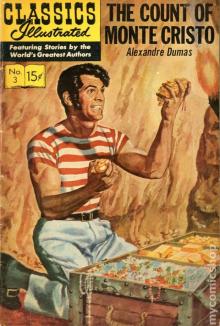 The Count of Monte Cristo, Illustrated
The Count of Monte Cristo, Illustrated Knight of Maison-Rouge
Knight of Maison-Rouge![The Three Musketeers - Alexandre Dumas - [Full Version] - (ANNOTATED) Read online](http://i1.bookreadfree.com/14/the_three_musketeers_-_alexandre_dumas_-_[full_version]_-_annotated_preview.jpg) The Three Musketeers - Alexandre Dumas - [Full Version] - (ANNOTATED)
The Three Musketeers - Alexandre Dumas - [Full Version] - (ANNOTATED)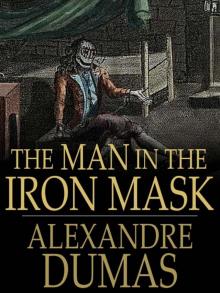 The Man in the Iron Mask
The Man in the Iron Mask The Count of Monte Cristo (Penguin Classics eBook)
The Count of Monte Cristo (Penguin Classics eBook) Count of Monte Cristo (abridged) (Barnes & Noble Classics Series)
Count of Monte Cristo (abridged) (Barnes & Noble Classics Series) The Women's War
The Women's War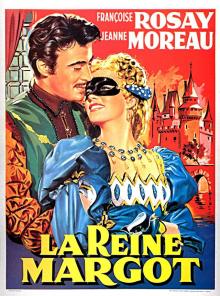 La reine Margot. English
La reine Margot. English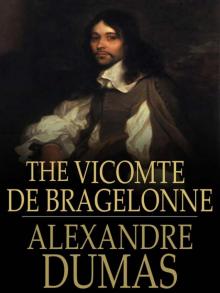 The Vicomte de Bragelonne
The Vicomte de Bragelonne__english_preview.jpg) La dame aux camélias (Novel). English
La dame aux camélias (Novel). English The Count of Monte Cristo
The Count of Monte Cristo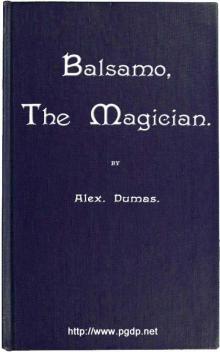 Balsamo, the Magician; or, The Memoirs of a Physician
Balsamo, the Magician; or, The Memoirs of a Physician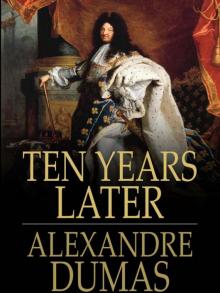 Ten Years Later
Ten Years Later The Romance of Violette
The Romance of Violette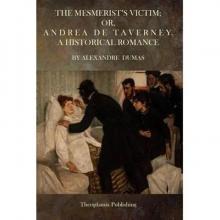 The Mesmerist's Victim
The Mesmerist's Victim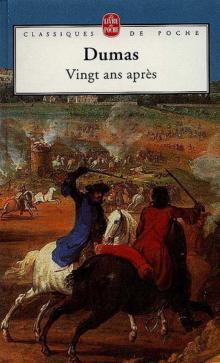 Vingt ans après. English
Vingt ans après. English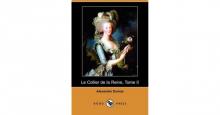 Le collier de la reine. English
Le collier de la reine. English Taking the Bastile; Or, Pitou the Peasant
Taking the Bastile; Or, Pitou the Peasant The Hero of the People: A Historical Romance of Love, Liberty and Loyalty
The Hero of the People: A Historical Romance of Love, Liberty and Loyalty Louise de la Valliere
Louise de la Valliere Les Quarante-cinq. English
Les Quarante-cinq. English Ange Pitou (Volume 1)
Ange Pitou (Volume 1) The Royal Life Guard; or, the flight of the royal family.
The Royal Life Guard; or, the flight of the royal family.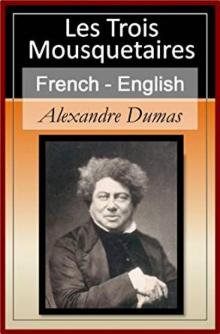 Les trois mousquetaires. English
Les trois mousquetaires. English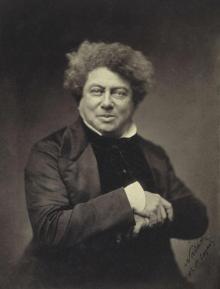 Une fille du régent. English
Une fille du régent. English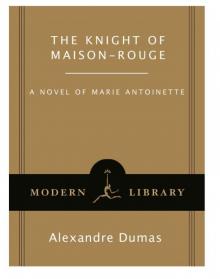 The Knight of Maison-Rouge
The Knight of Maison-Rouge The Count of Monte Cristo (Unabridged Penguin)
The Count of Monte Cristo (Unabridged Penguin) Ange Pitou
Ange Pitou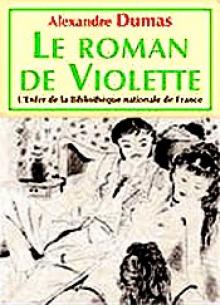 The Romance of Violette (vintage erotica)
The Romance of Violette (vintage erotica)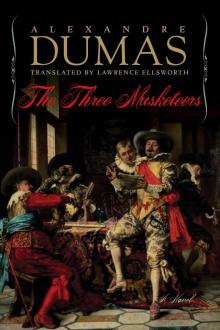 The Three Musketeers
The Three Musketeers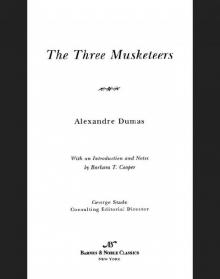 Three Musketeers (Barnes & Noble Classics Series)
Three Musketeers (Barnes & Noble Classics Series)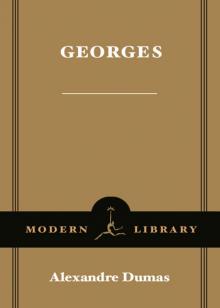 Georges
Georges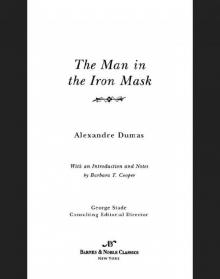 Man in the Iron Mask (Barnes & Noble Classics Series)
Man in the Iron Mask (Barnes & Noble Classics Series)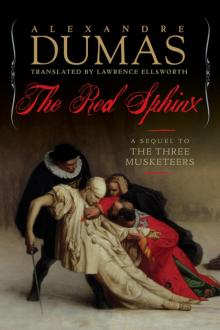 The Red Sphinx
The Red Sphinx